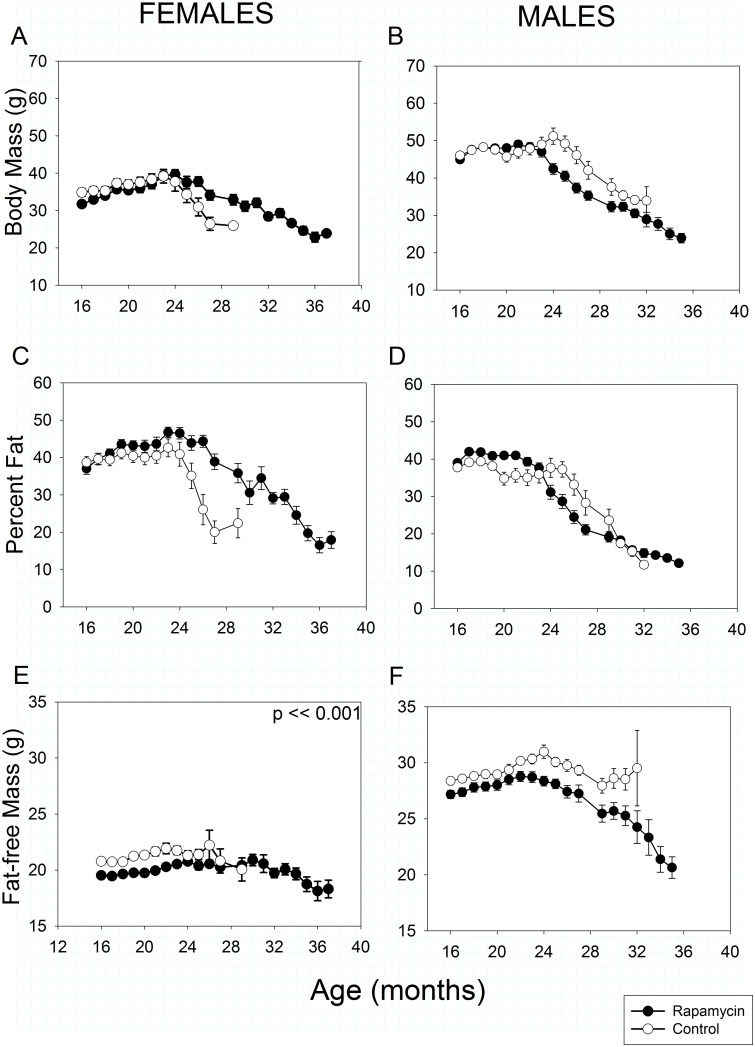Fig 2. Body mass and composition in rapamycin-fed mice (filled circles) versus controls (hollow circles).
P-values shown on individual panels only if there is a significant treatment effect independent of age. Sample sizes varied, depending on age, control females, n = 32–2; rapamycin females, n = 30–4; control males, n = 33–2; rapamycin males, n = 36–3. A, B: Total body mass. Highly significant differences (p << 0.001) exist in treatment x age effects in body for both sexes. Although they weighed less than controls by 16 months of age, rapamycin-fed females retained body mass longer, whereas rapamycin-fed males were similar to controls at 16 months but lost body mass earlier and remained lighter as they aged. C, D: Percent body fat. Highly significant differences (p << 0.001) in treatment x age effects exist for both sexes. As in with body mass, aging rapamycin-fed females retained body fat longer and lost body fat more slowly than age-matched controls. In contrast, rapamycin-fed males initially had a higher percentage of body fat, but lost fat mass earlier than controls. E, F: Fat-free mass, sometimes referred to as lean mass. Although obscured by the scaling, rapamycin-fed females had lower fat-free mass than controls at all ages measured. Fat-free mass declined more slowly with age in rapamycin-fed females than males.

